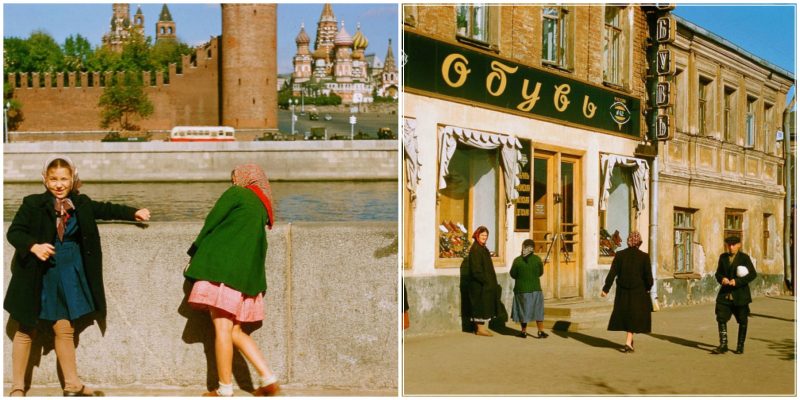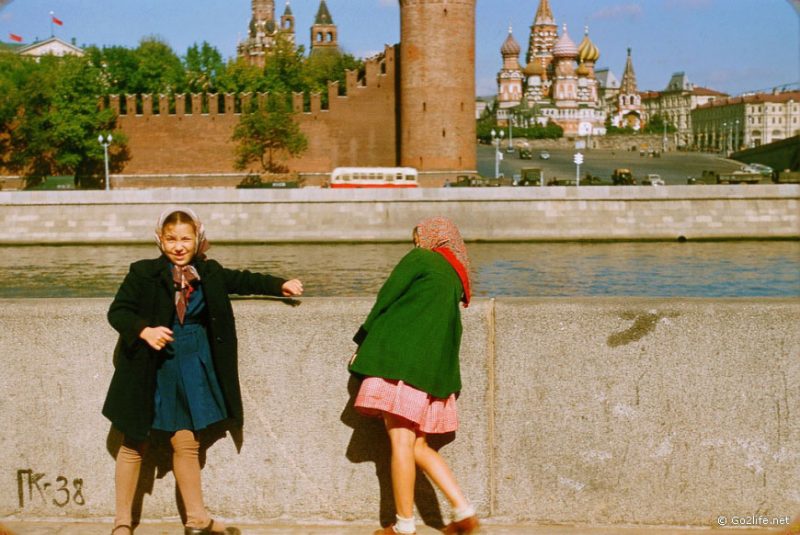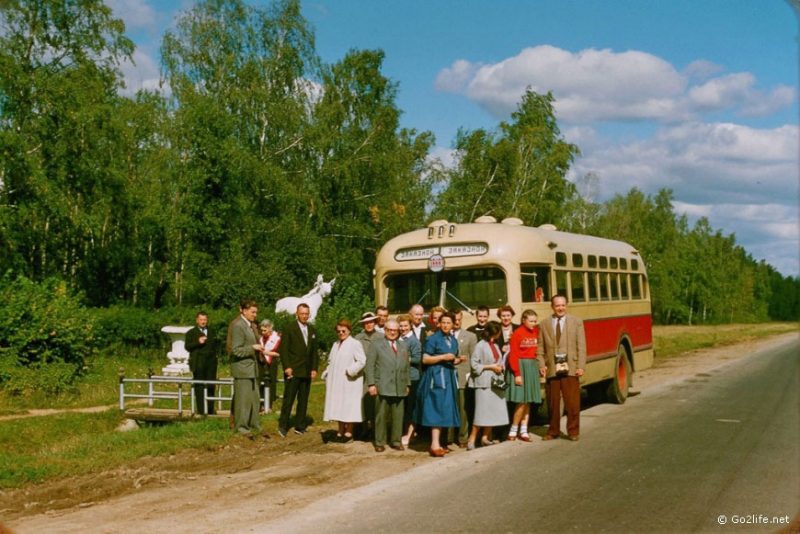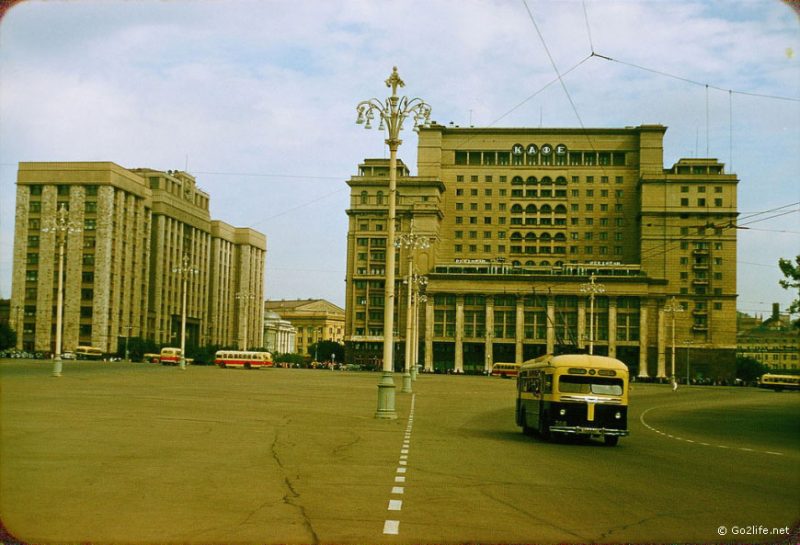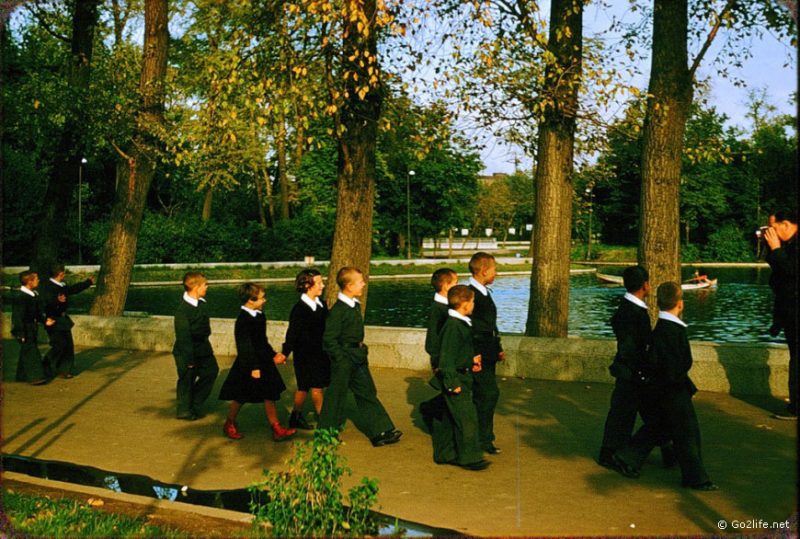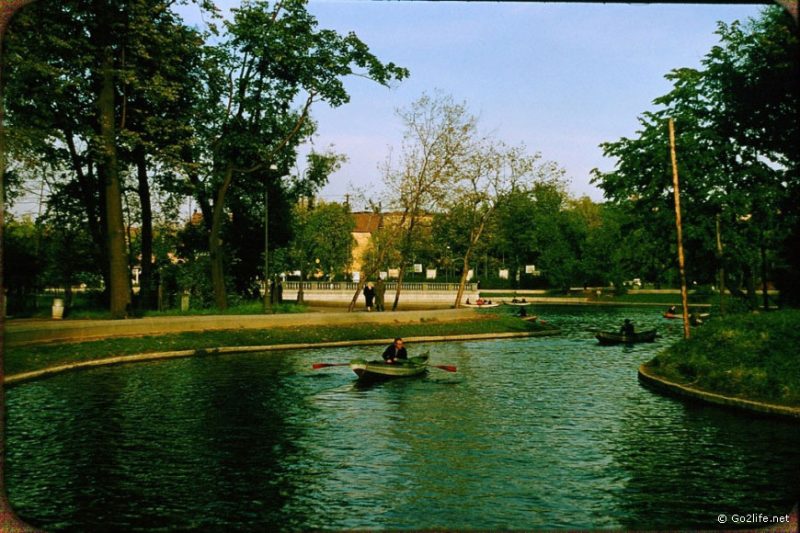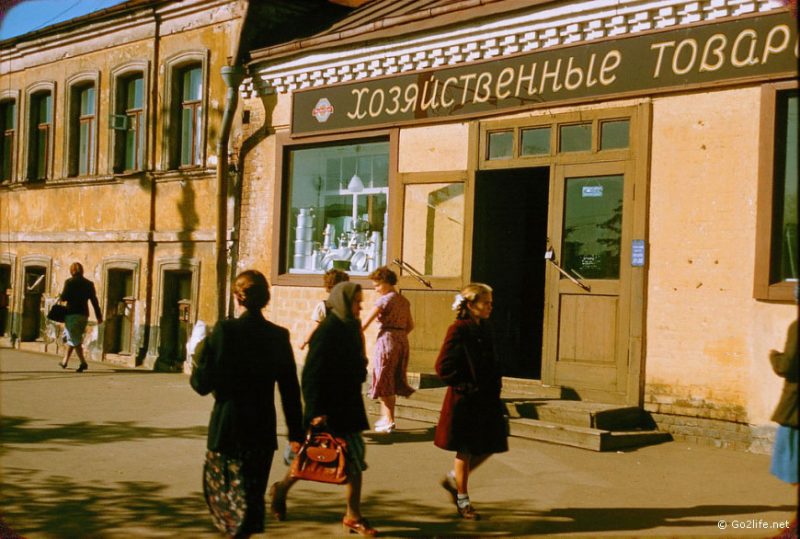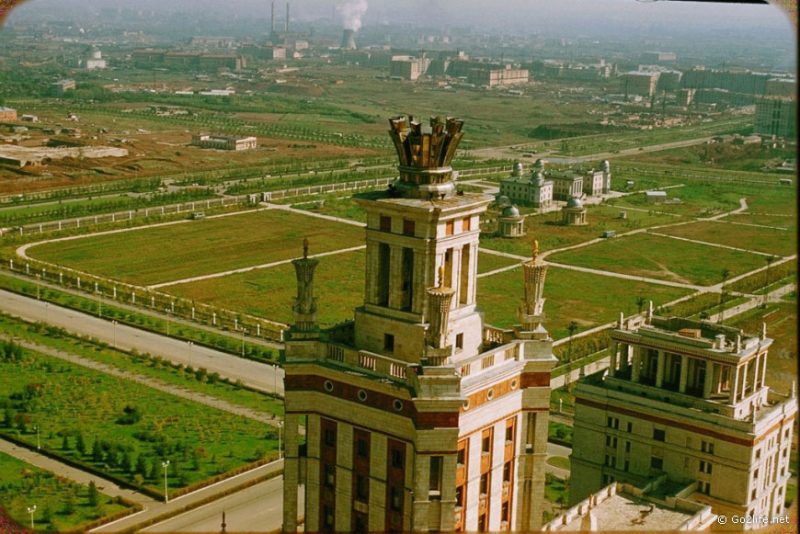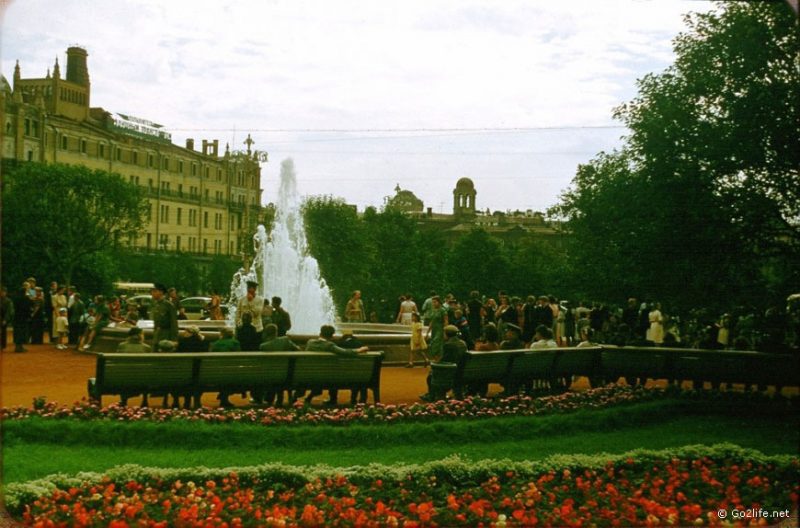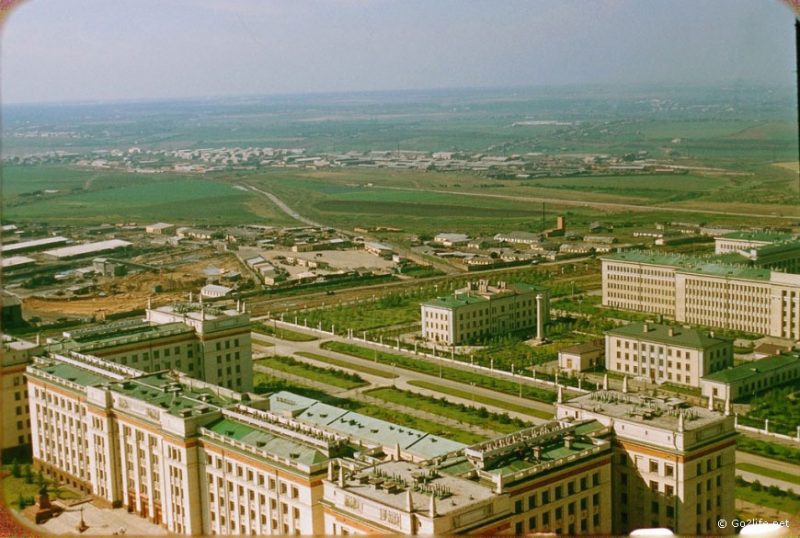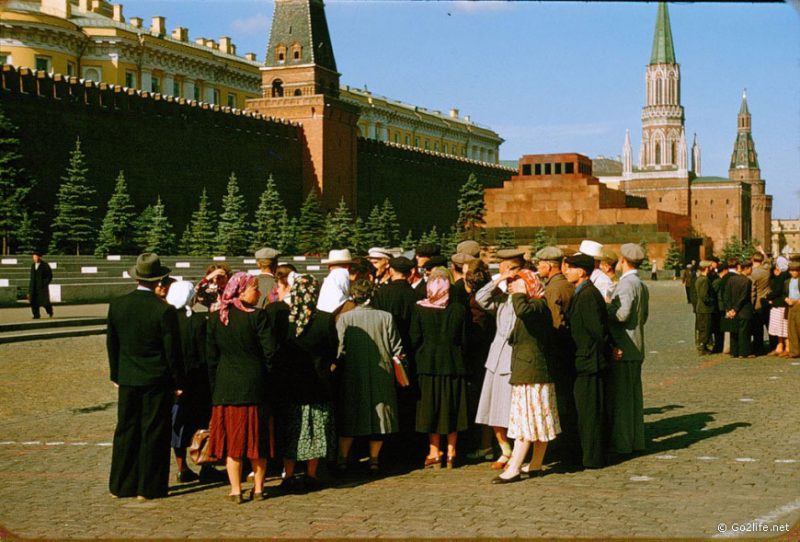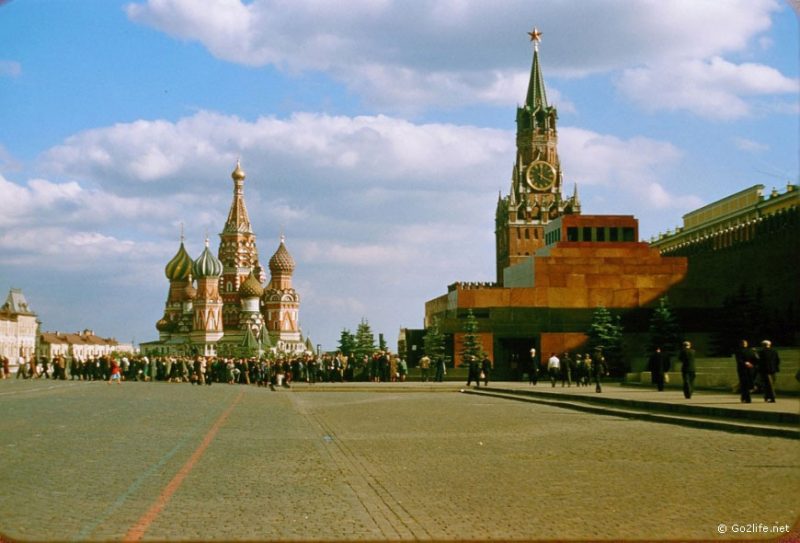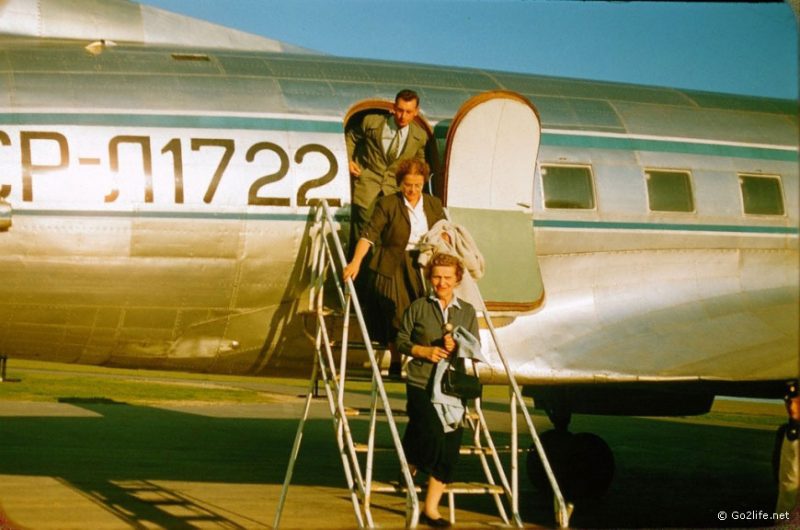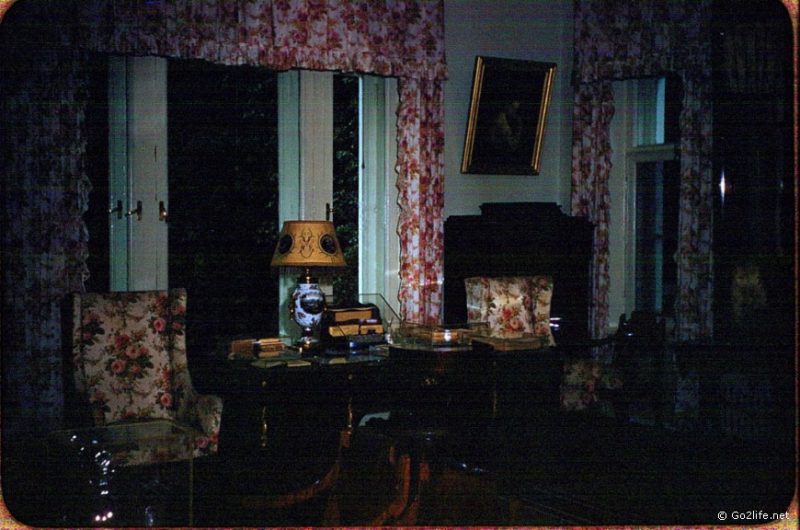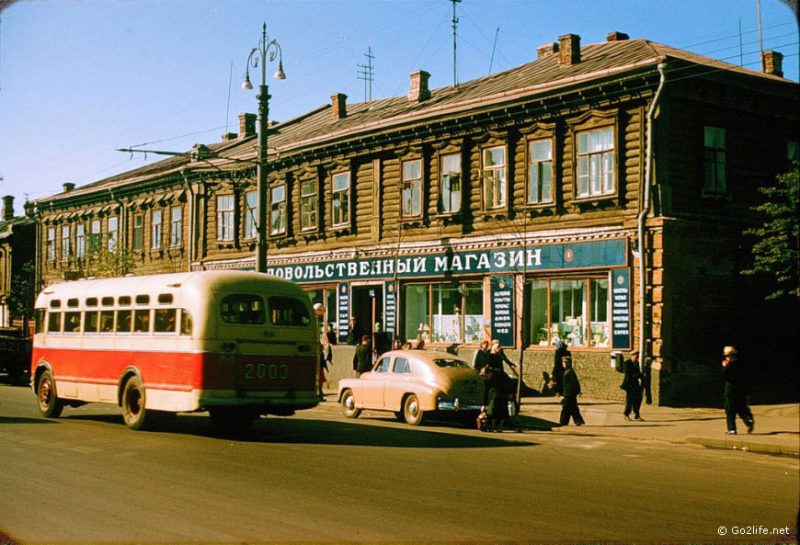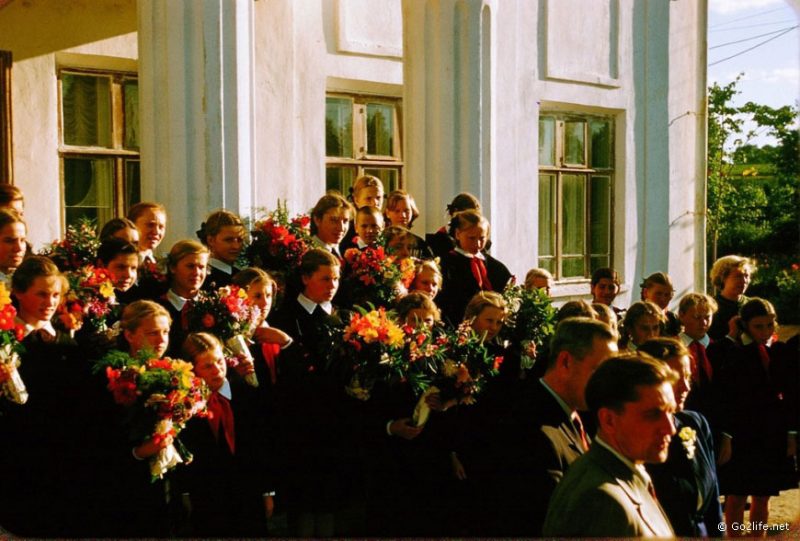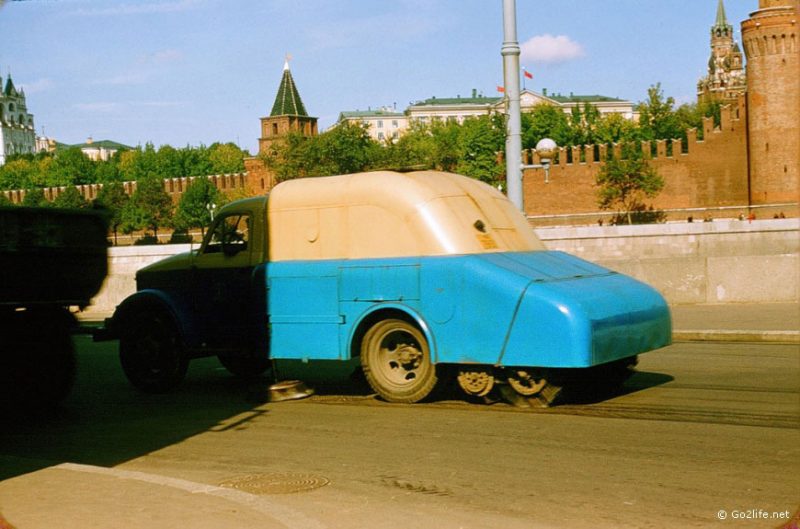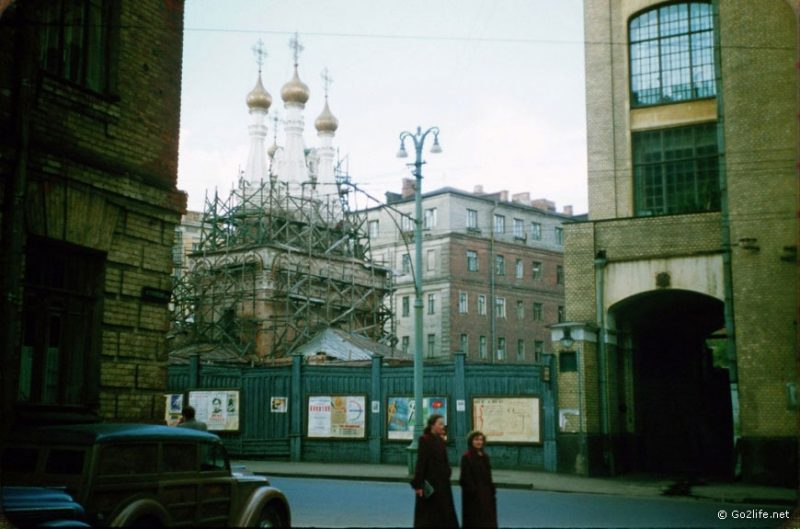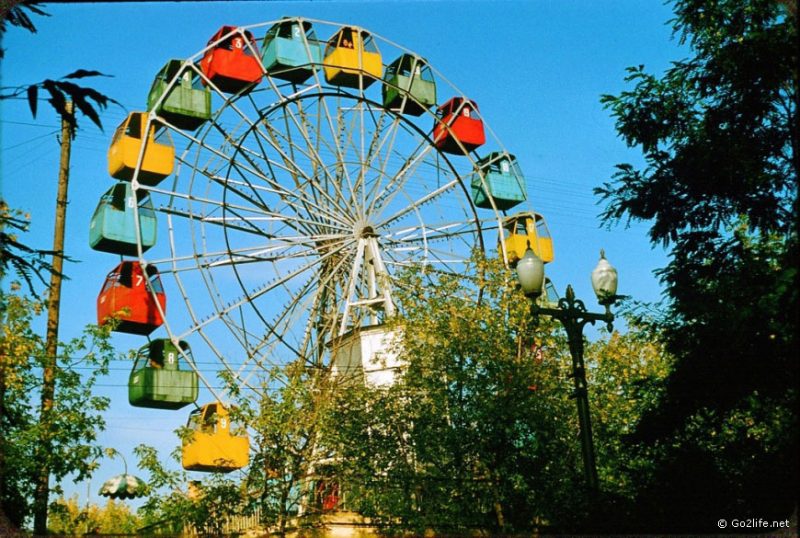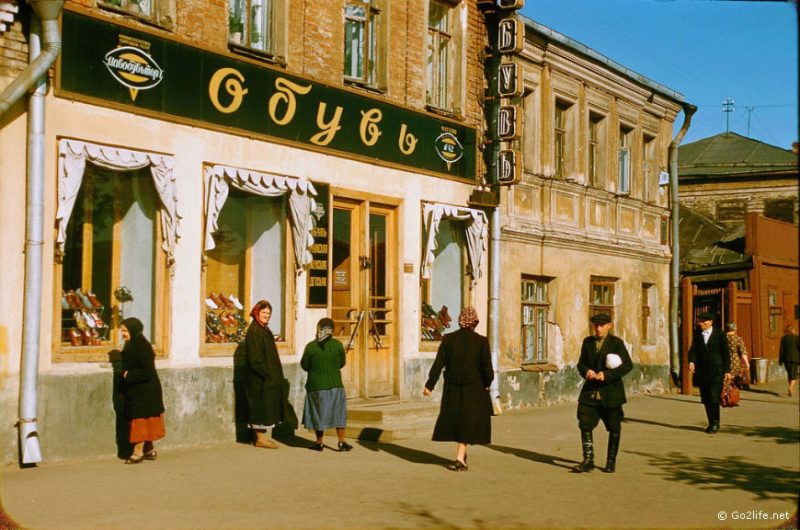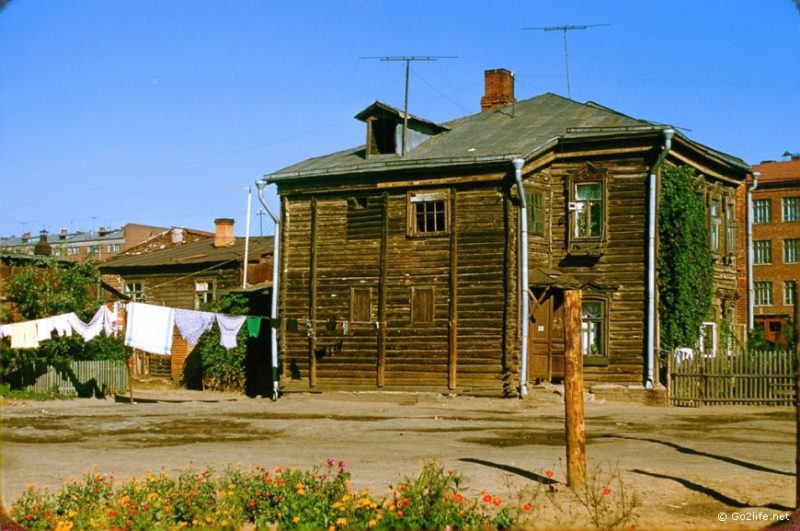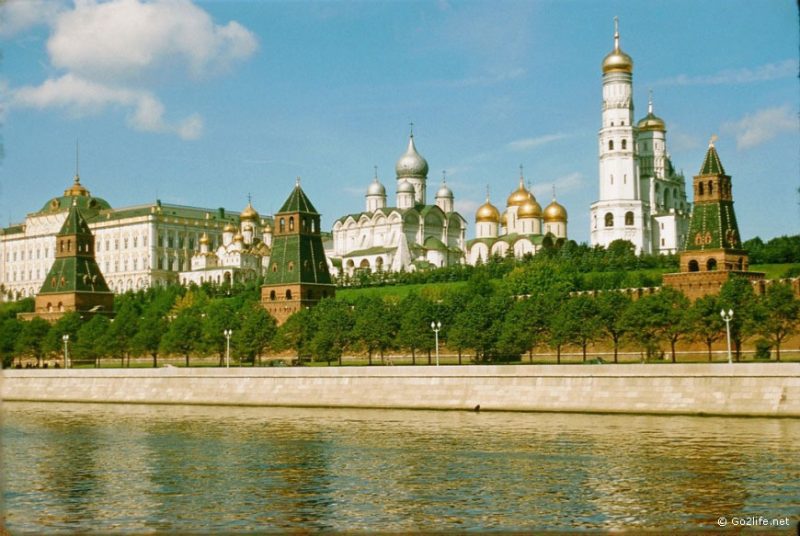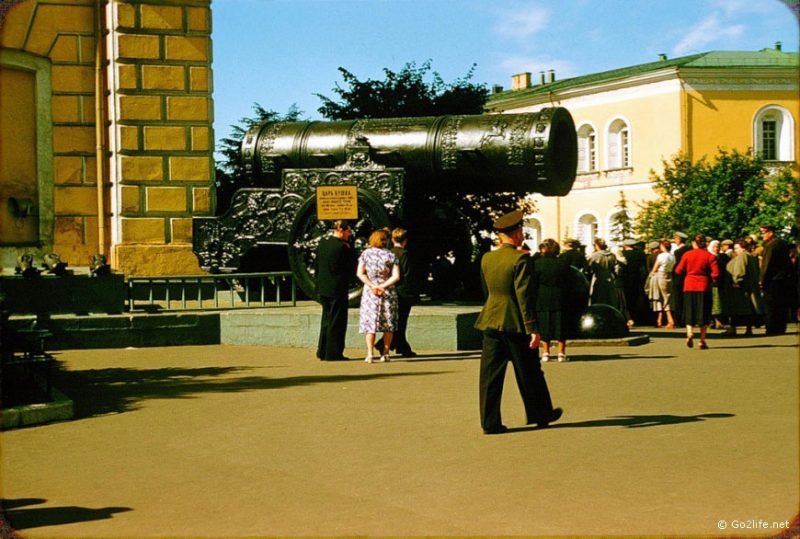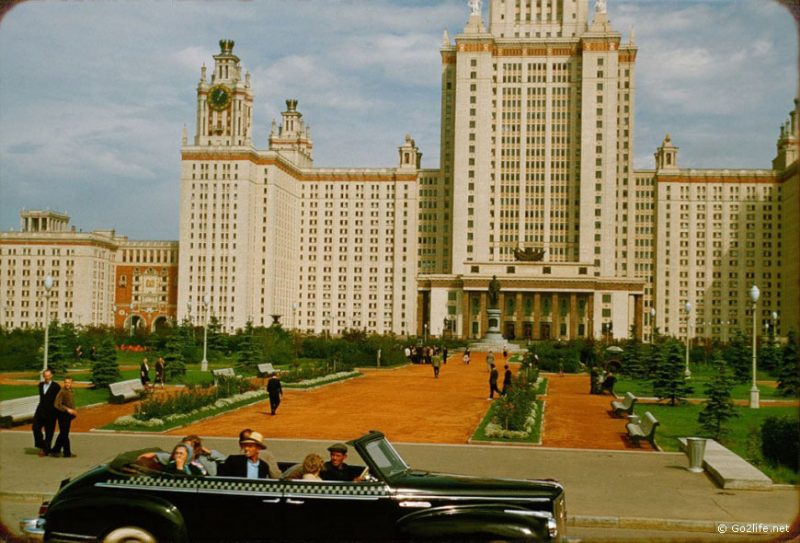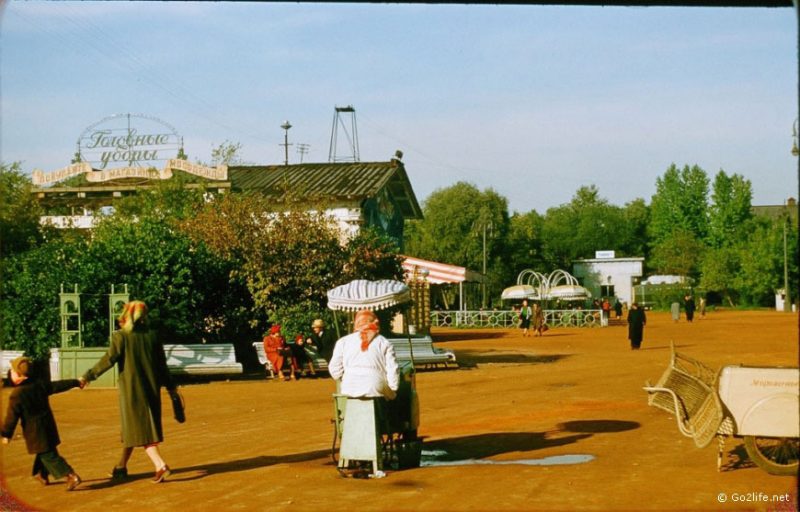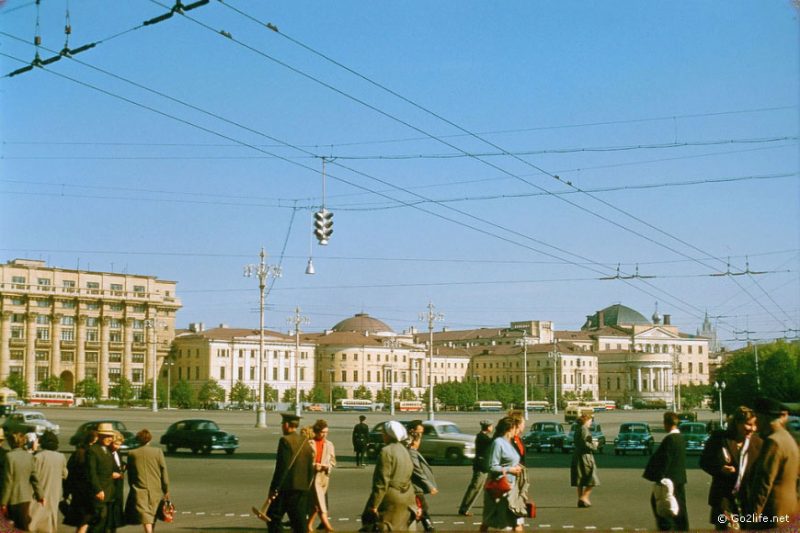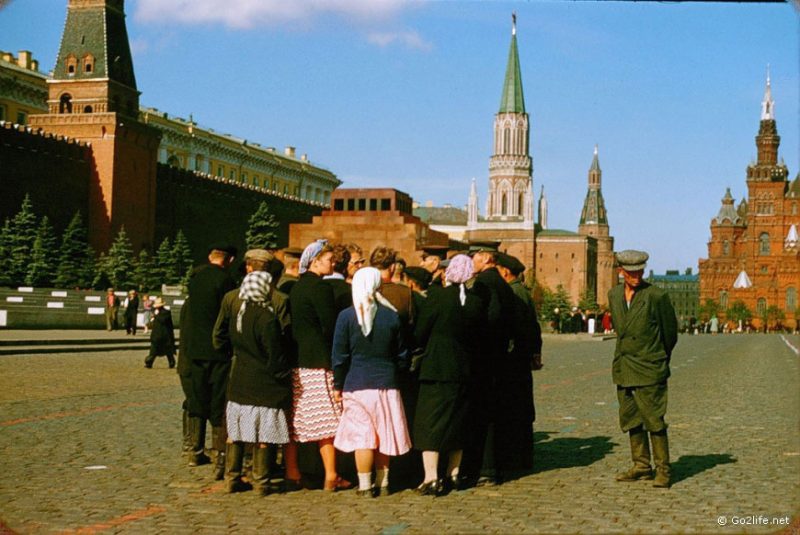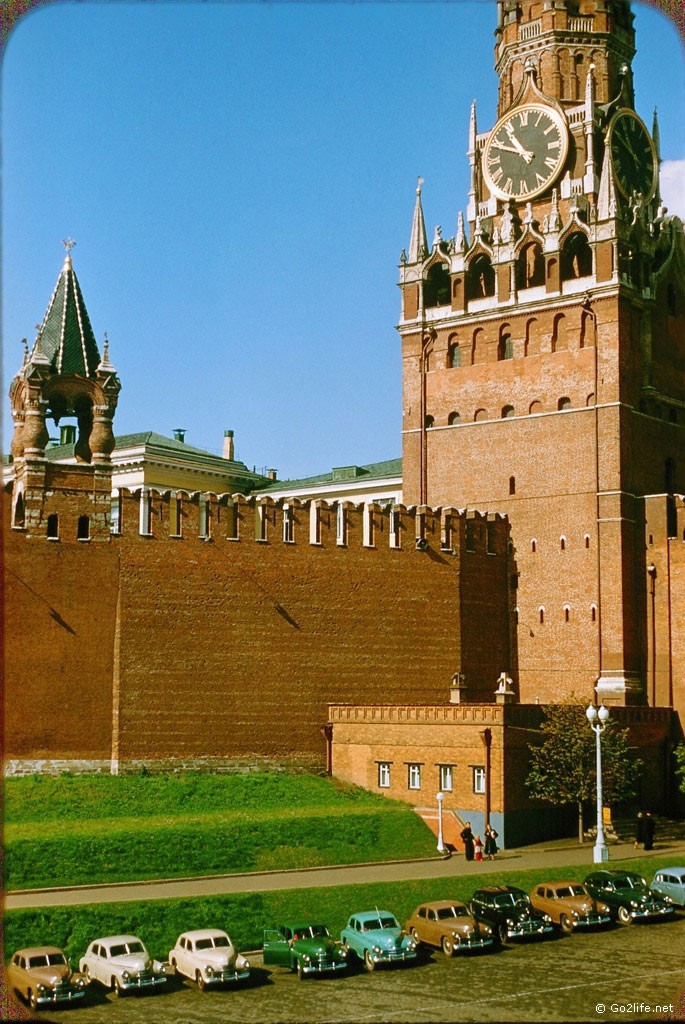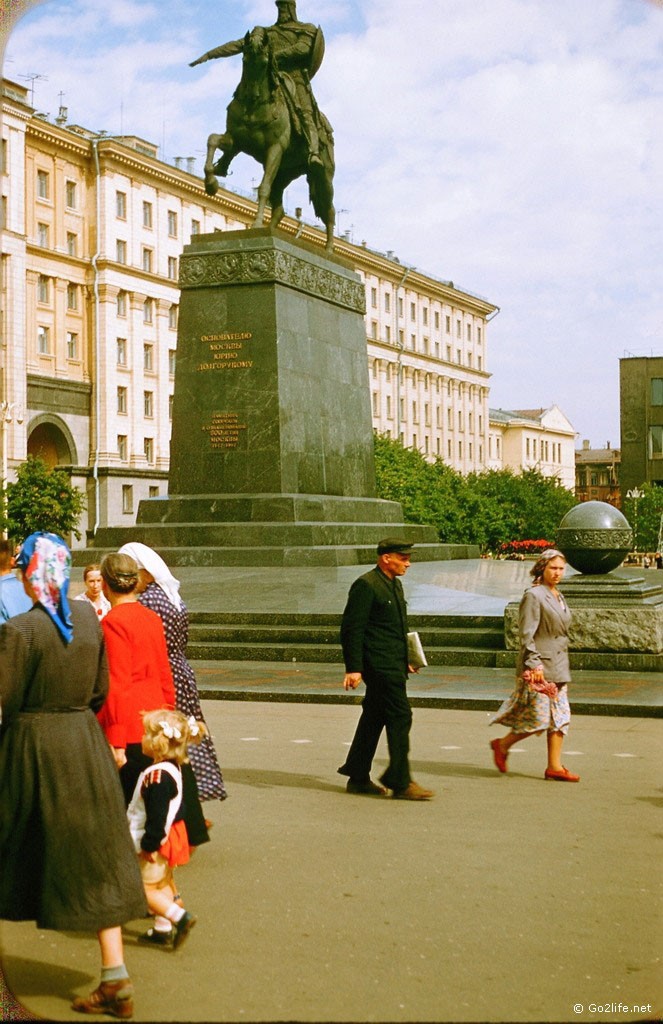Jacques Dupaquier- French scientist, historian, and member of the Communist Party of France, traveled several times to the Soviet Union: in 1956, 1964 and 1975.
In September 1956, Jacques Dupaquierarrived to the capital of the USSR – Moscow. Asked what most struck him in the capital of Soviet Russia, he gave the following answer: ” I was amazed that in 1956 the Russian capital, Moscow has been more than half a wooden city, and beyond the borders of the main street dominated by poverty .”
Take a look at the photos taken by Jacques Dupaquier.
In the beginning of 20th century, several strikes and armed risings in Moscow paved the way to the October Revolution. In 1918 the Bolsheviks moved the seat of government from Saint Petersburg back to Moscow.
During the Great Patriotic War, the Soviet State Committee of Defense and the General Staff of the Red Army were located in Moscow. In 1941, 16 divisions of the national volunteers (more than 160,000 people), 25 battalions (18,000 people) and 4 engineering regiments were formed among the Muscovites. In November 1941, German Army Group Centre was stopped at the outskirts of the city and then driven off in the course of the Battle of Moscow. Many factories were evacuated, together with much of the government, and from October 20 the city was declared to be in a state of siege. Its remaining inhabitants built and manned antitank defenses, while the city was bombarded from the air. On May 1, 1944 a medal “For the defense of Moscow” and in 1947 another medal “In memory of the 800th anniversary of Moscow” were instituted.
During the postwar years, there was a serious housing crisis, solved by the invention of high-rise apartments. There are about 13,000 of these standardized and prefabricated apartment block, housing the majority of Moscow’s population. Apartments were built and partly furnished in the factory before being raised and stacked into tall columns. The popular Soviet-era comic film Irony of Fateparodies this construction method.
The Moscow Metro opened in 1935 and immediately became the centerpiece of the transportation system. More than that it was a Stalinist device to awe and control the populace, and give them an appreciation of Soviet realist art. It became the prototype for future Soviet large-scale technologies. Lazar Kaganovich was in charge; he designed the subway so that citizens would absorb the values and ethos of Stalinist civilization as they rode. The artwork of the 13 original stations became nationally and internationally famous. For example, the Sverdlov Square subway station featured porcelain bas-reliefs depicting the daily life of the Soviet peoples, and the bas-reliefs at the Dynamo Stadium sports complex glorified sports and the physical prowess of the powerful new “Homo Sovieticus.” (Soviet man). The metro was touted as the symbol of the new social order—a sort of Communist cathedral of engineering modernity. Soviet workers did the labor and the art work, but the main engineering designs, routes, and construction plans were handled by specialists recruited from the London Underground. The Britons called for tunneling instead of the “cut-and-cover” technique, the use of escalators instead of lifts, and designed the routes and the rolling stock. The paranoia of Stalin and the NKVD was evident when the secret police arrested numerous British engineers for espionage—that is for gaining an in-depth knowledge of the city’s physical layout. Engineers for the Metropolitan Vickers Electrical Company were given a show trial and deported in 1933, ending the role of British business in the USSR
